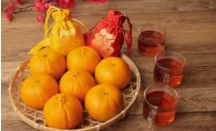Moving into a new home is a significant milestone in one’s life, and in Singapore, this event is often celebrated with housewarming ceremonies that reflect the cultural diversity of the nation. Whether it’s a new HDB flat, a private condominium, or a landed property, Singaporeans of various ethnic backgrounds follow unique customs and rituals to invite prosperity, health, and happiness into their new homes.
In this blog post, we’ll explore the traditional housewarming ceremonies practiced by the Chinese, Malay, Indian, Eurasian, and Peranakan communities in Singapore. Each tradition has its own rich history, with symbolic items and rituals aimed at bringing good luck and blessings to the new homeowners.
Chinese Housewarming Traditions (????)
For the Chinese community in Singapore, housewarming ceremonies, known as “Qi?oqi?n zh? x?” (????), are filled with symbolism and practices aimed at attracting wealth, health, and harmony to the household. These customs are deeply rooted in Chinese culture and are followed to ensure the prosperity of the family.

Key Rituals and Items:
- Rolling a Pineapple: One of the most popular Chinese housewarming rituals involves rolling a pineapple into the house. This tradition stems from the Hokkien phrase “Ong Lai,” which means “fortune comes.” By rolling a pineapple into the home, the homeowners symbolically invite wealth and prosperity into their new space.
- Oranges for Luck: Oranges are a staple in Chinese housewarming ceremonies as they symbolize wealth and luck. Homeowners often place oranges around the house or give them to guests during the celebration to share the fortune.
- Rice and Salt: Another common practice is to bring rice and salt into the house. These items represent abundance and are believed to ensure that the family will always have enough food and essentials in their new home.
- Incense and Joss Paper: Incense is burned to honor deities and ancestors, asking for their blessings and protection. Joss paper, or “spirit money,” is also offered as part of this practice.
- Eight Treasures Pack: Some families present the new homeowners with an “Eight Treasures” pack, which includes rice, noodles, tea leaves, cooking oil, and other essentials that symbolize good fortune and abundance.
These practices are not only a form of blessing but also serve as a way to introduce harmony and balance into the new living space.
Malay Housewarming Traditions (Kenduri Kesyukuran)
The Malay community in Singapore celebrates their housewarming ceremony with a “Kenduri Kesyukuran,” a religious gathering to express gratitude for the new home. The ceremony is centered around Islamic prayers and acts of charity.
Key Rituals and Items:
- Reciting Doa Selamat: The housewarming begins with the recitation of Doa Selamat, a prayer of safety and well-being. This is usually led by an ustaz (religious leader), who prays for the protection and happiness of the household.
- Dates for Blessings: Dates are often served during the ceremony, symbolizing blessings and the sweetness of life in the new home. This practice is a reflection of the Islamic tradition of breaking fast with dates during Ramadan.
- Holy Water: Holy water, or air zamzam, is sprinkled around the house to purify the space and protect it from negative energy. This water is often brought from the holy city of Mecca, making it especially significant.
- Prayer Beads and Incense: Prayer beads, or tasbih, may be placed in the home as a symbol of the homeowners’ faith. Incense is also burned to invoke blessings and keep away negative spirits.
- Traditional Sweets (Kuih): During the ceremony, guests are served traditional Malay sweets, known as kuih, to signify a sweet beginning in the new home. Popular choices include kuih lapis and ondeh-ondeh.

The Kenduri Kesyukuran is not just a celebration of a new home but also an opportunity to share blessings with friends and family.
Indian Housewarming Traditions (Griha Pravesh)
For Indian families in Singapore, housewarming ceremonies are steeped in Hindu rituals. The “Griha Pravesh” is a traditional Hindu ceremony that marks the first entry into a new home, with prayers and offerings made to deities to ensure the household’s prosperity.
Key Rituals and Items:
- Griha Pravesh Puja: The central element of the Indian housewarming ceremony is the Griha Pravesh Puja, a prayer ritual dedicated to Lord Ganesha, the remover of obstacles. By performing this puja, the homeowners seek blessings for their new journey and ask for protection against negative forces.
- Boiling Milk: Boiling milk in the kitchen until it overflows is a symbolic act representing abundance and prosperity. The overflowing milk signifies that the household will always have sufficient resources.
- Breaking a Coconut: A common housewarming practice is to break a coconut at the entrance of the home. This ritual is believed to remove any negative energy and invite positive vibes into the house.
- Turmeric and Kumkum: The entrance of the house is often decorated with turmeric and kumkum (vermilion) to ward off evil spirits and bring positive energy. These sacred powders are believed to provide protection to the household.
- Mango Leaves: Fresh mango leaves are hung on the door frame as a sign of purity and good fortune. This practice is common in many Hindu rituals and is believed to bring prosperity to the home.
The Griha Pravesh ceremony is a beautiful blend of tradition and spirituality, ensuring that the new home is blessed with happiness and peace.

Eurasian or Christian Housewarming Traditions
Eurasians and Christians in Singapore often incorporate religious elements into their housewarming ceremonies. These ceremonies emphasize the importance of faith and divine protection for the home.
Key Rituals and Items:
- Sprinkling Holy Water: A common practice in Christian housewarming ceremonies is to sprinkle holy water in the new home. This act is meant to purify the space and bring God’s blessings to the household.
- Lighting Candles: Lighting candles around the house symbolizes the light of Christ guiding the family and illuminating the new home with peace and harmony.
- Bible or Cross: Some families place a Bible or a cross in a prominent spot in the home as a symbol of their faith and a reminder of God’s protection.
- Blessing by a Priest: In many cases, a priest is invited to bless the house. This is often followed by prayers for the safety, health, and happiness of the family living in the home.
- Bread and Salt: Bread symbolizes that the family will never go hungry, while salt represents that their lives will always be full of flavor and joy.
These Christian housewarming rituals focus on the spiritual well-being of the household and the presence of divine guidance in their daily lives.
Peranakan Housewarming Traditions
The Peranakan community, known for its vibrant blend of Chinese and Malay cultures, also has its own unique housewarming traditions. These rituals are centered around blessings and the preservation of positive energy in the home.
Key Rituals and Items:
- Rice and Coins: Tossing rice and coins at the entrance of the home is a Peranakan tradition that symbolizes wealth and good fortune. This ritual ensures that the family will prosper in their new space.
- Pineapple Tarts: Pineapple tarts are often served to guests as a symbol of prosperity. The pineapple is a recurring motif in Peranakan culture, representing good luck and wealth.
- Red Lanterns: Red lanterns are hung outside the house to welcome positive energy and keep away any bad luck. The color red is considered auspicious and is commonly used in Peranakan ceremonies.
- Betel Leaves (Daun Sirih): Betel leaves are placed around the home to ward off evil spirits and protect the household from harm.
The Peranakan housewarming ceremony is a unique blend of cultural practices aimed at bringing blessings and harmony into the new home.
Conclusion
In Singapore, housewarming ceremonies are more than just a celebration of a new home—they are a way for families to connect with their cultural roots, invite blessings, and ensure prosperity for the future. Whether it’s the rolling of a pineapple in a Chinese home, the recitation of prayers in a Malay household, or the breaking of a coconut in an Indian house, these rituals reflect the deep cultural significance of homeownership in Singapore’s diverse society.
No matter the tradition, the essence of a housewarming ceremony is the same: to create a space filled with positive energy, love, and prosperity for the homeowners and their guests.
Further reading :


Leave a Reply